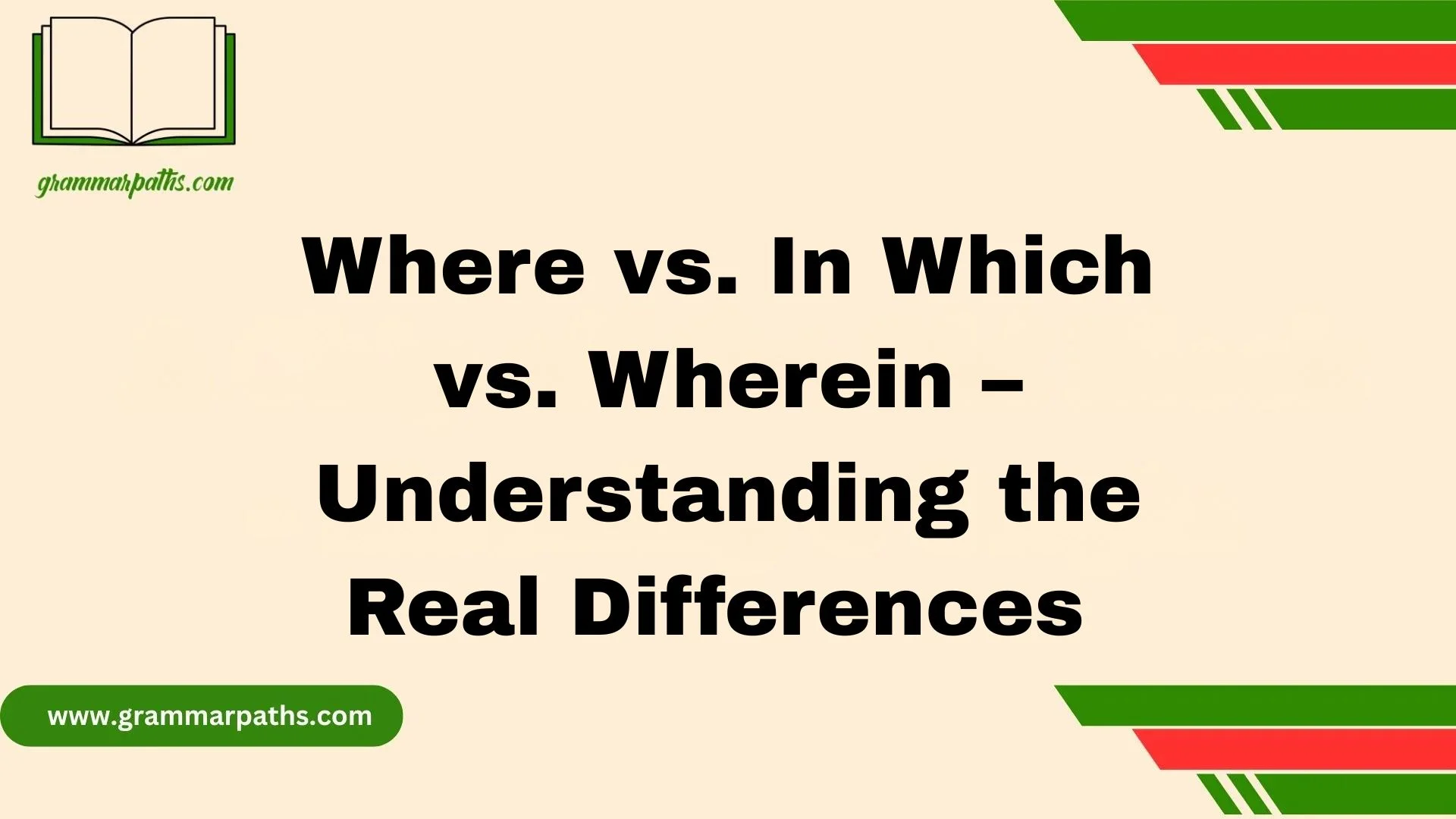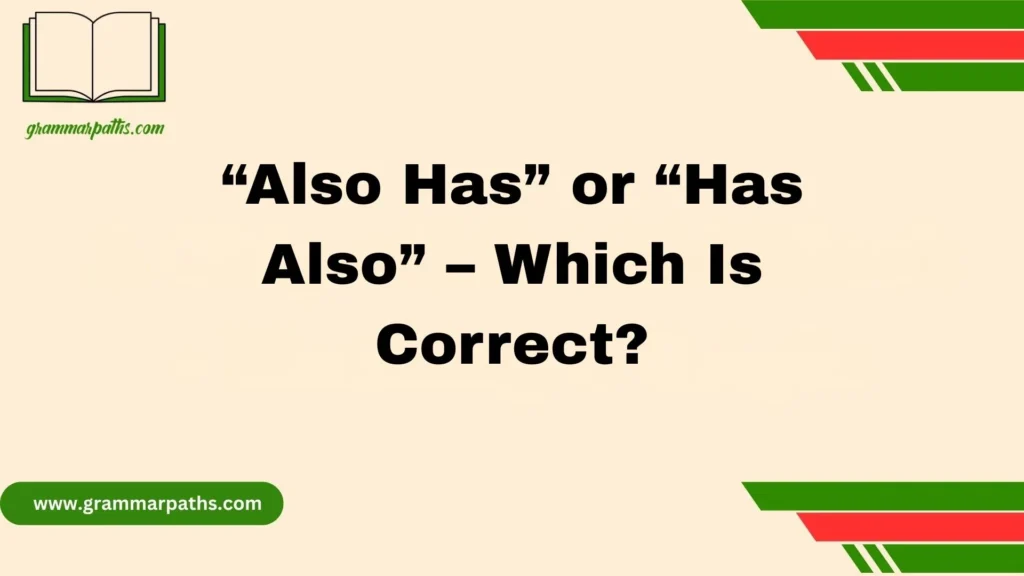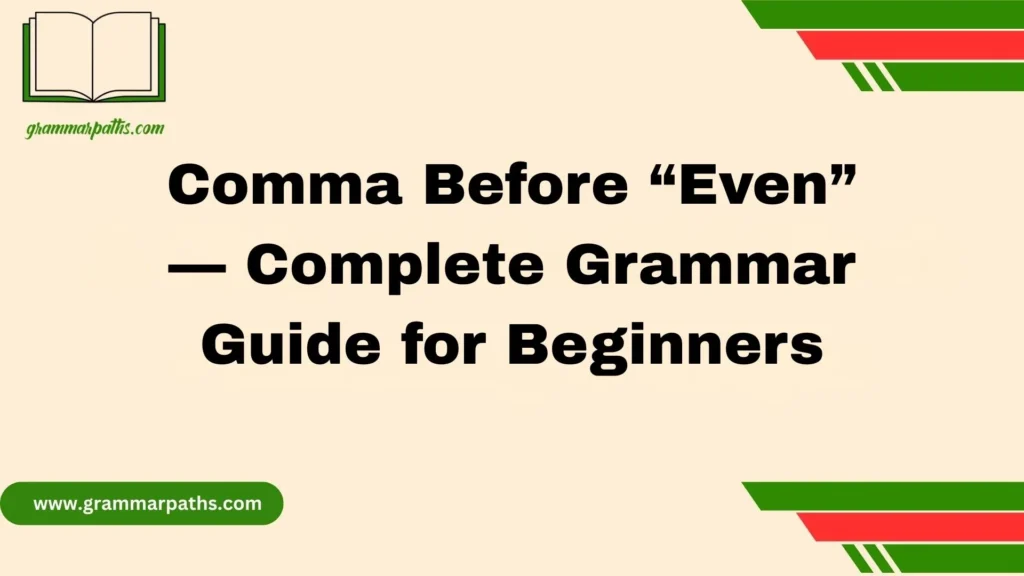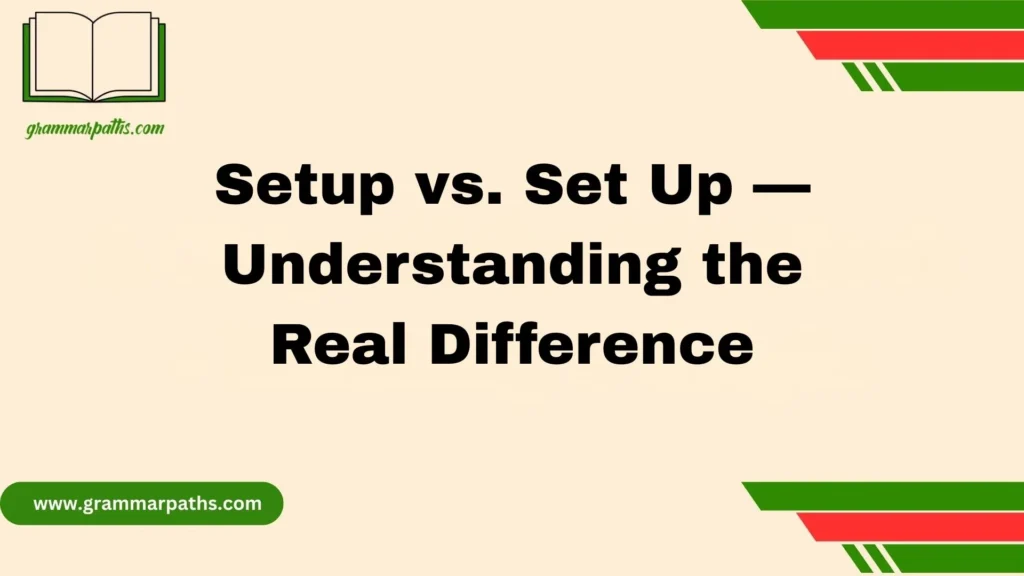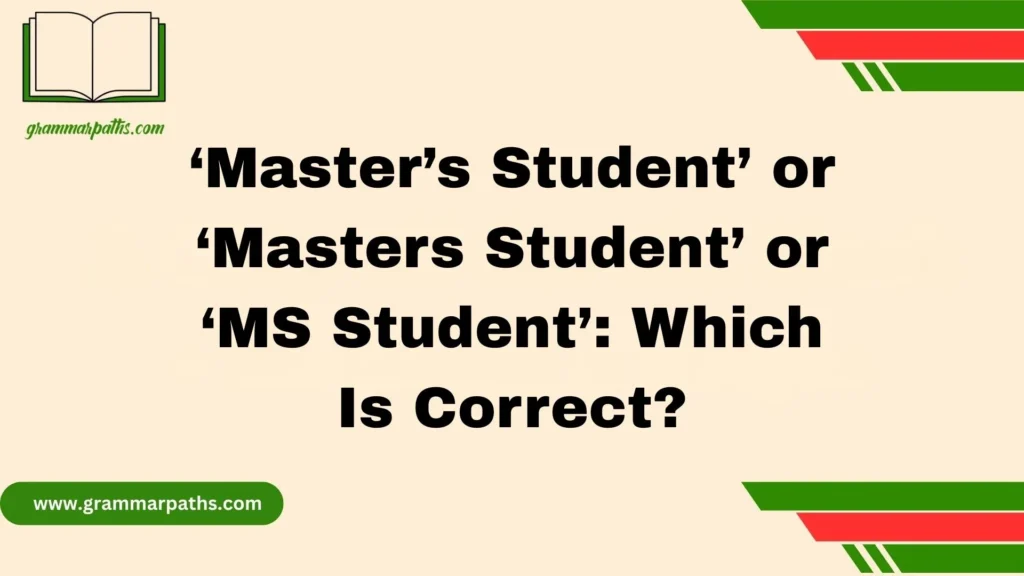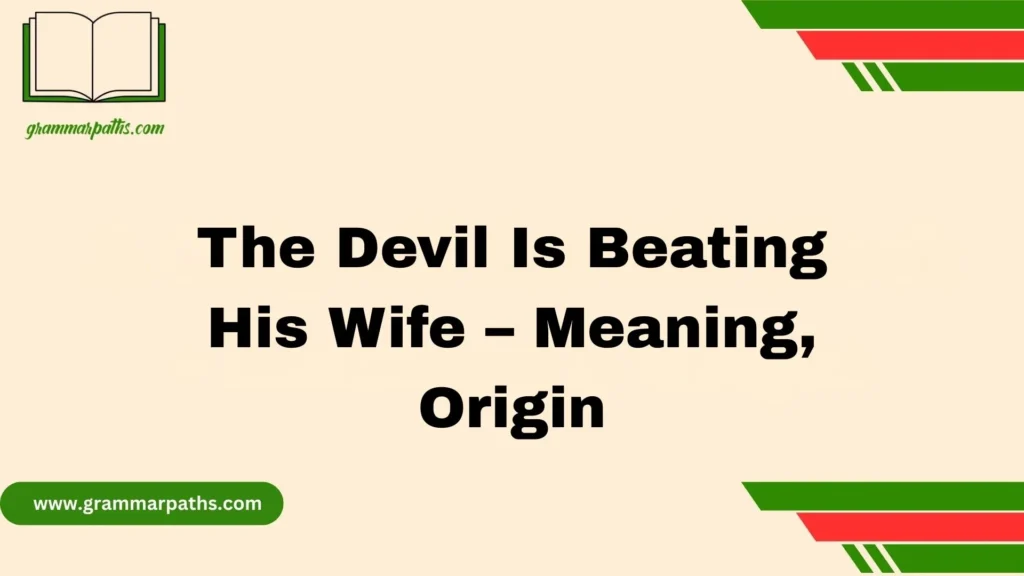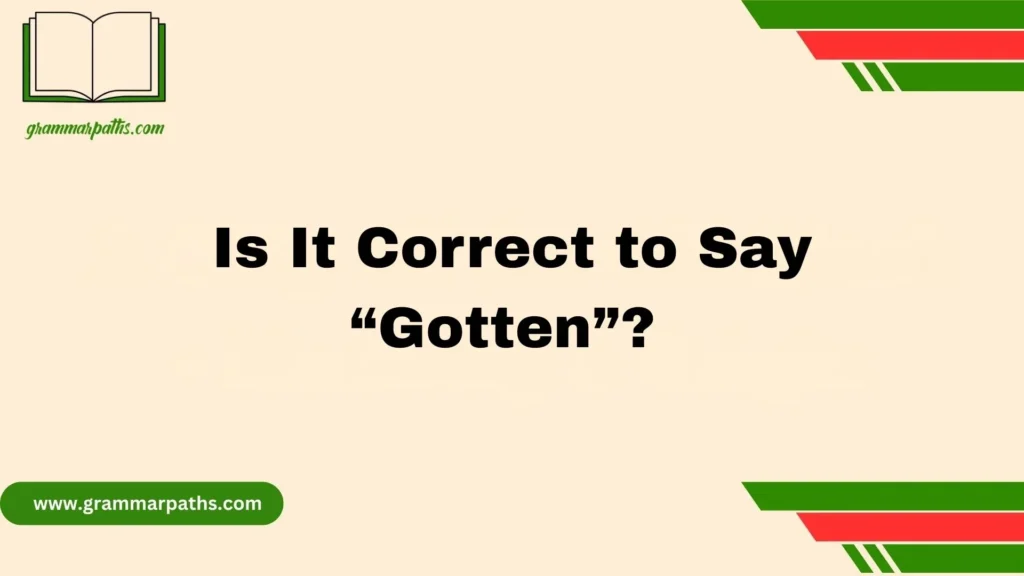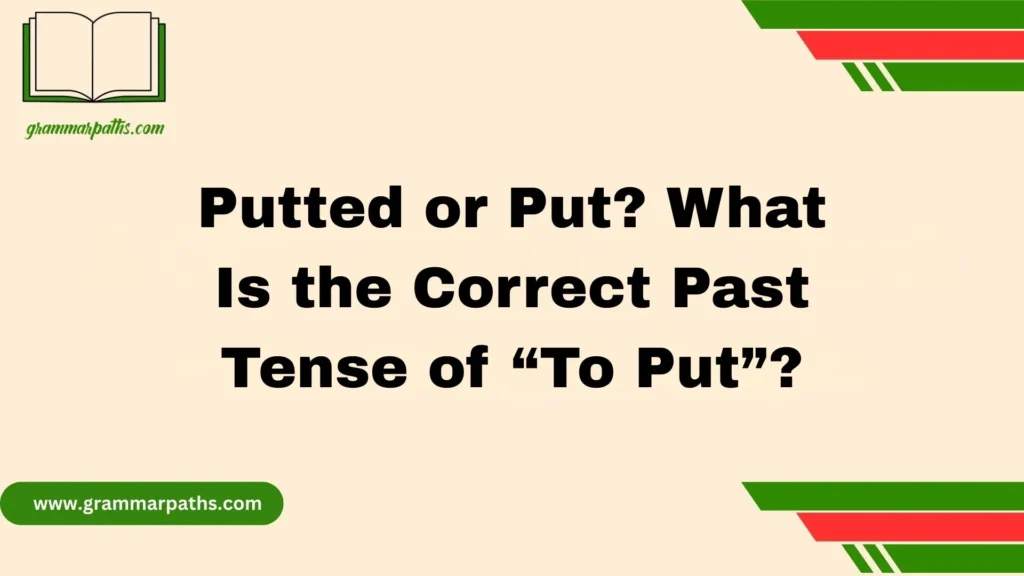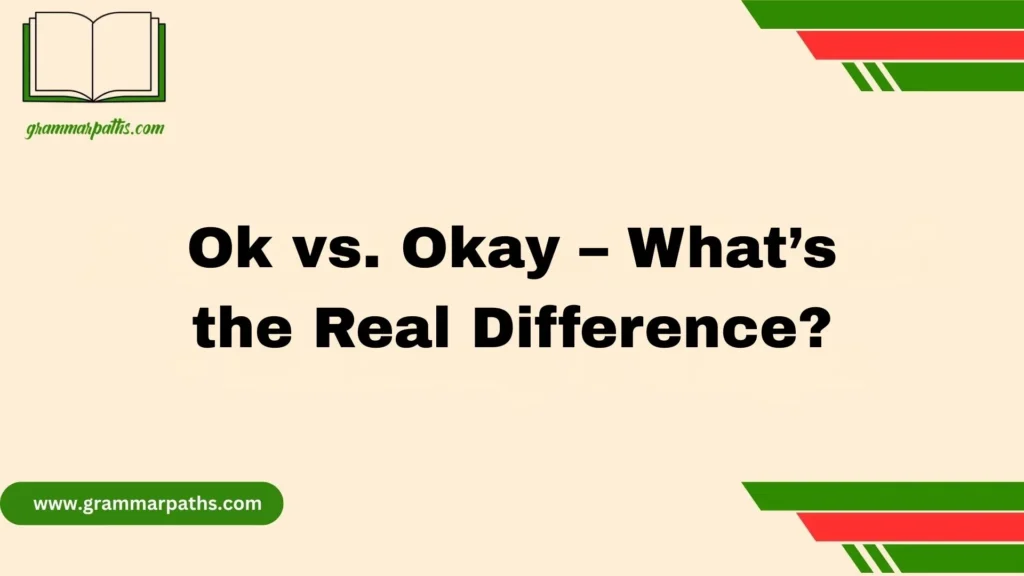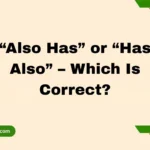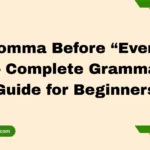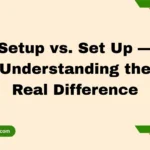When I first began writing academic content, I often found myself hesitating between the phrases in which and where. It seemed like a minor issue, but I soon realized that this choice could either sharpen or cloud the clarity of my work. In formal contexts, every structure, tone, and impact matters because it shapes how the message is received. While drafting a contract, outlining a scholarly essay, or even chatting through email in a professional setting, the decision between in which and where became more than just about grammar—it reflected precision, intent, and the overall professionalism of the text.
Through experience, I noticed that referring to specific objects or abstract concepts works best with in which, as it fits naturally into structured sentences and feels more exact and preferred in formal styles. On the other hand, where feels more conversational and suits everyday writing about a location—whether physical or broadly understood by the audience. The best writers learn how to balance both styles, depending on their goals and the contexts they write for, using subtle shifts in tone and word choice to enhance meaning and connection.
Understanding the Core Difference Between “Where,” “In Which,” and “Wherein”
At a glance, all three refer to location or context, but their grammatical functions differ.
| Expression | Part of Speech | Meaning | Tone/Formality | Common Use |
| Where | Adverb / Conjunction | Refers to a place or situation | Neutral, conversational | Everyday speech and writing |
| In Which | Preposition + Relative Pronoun | Means “in that place” or “in that situation” | Formal, precise | Academic or professional writing |
| Wherein | Adverb | Means “in which,” often referring to an abstract idea | Very formal, old-fashioned | Legal, academic, or literary texts |
Quick Rule:
Use where for physical places or general situations.
Use in which for abstract contexts or formal tone.
Use wherein only when you want an old-fashioned or formal flavor.
The Role of “Where” in English Grammar
“Where” as an Adverb of Place
The word “where” primarily functions as an adverb showing location. It answers the question “at what place?” or “to what place?”
Examples:
- Let’s go back to the café where we met last week.
- She lives in a city where everyone knows each other.
In both cases, where refers to a physical location — café and city.
Common Error:
Writers often misuse where to describe abstract concepts:
The project where we discussed ideas was long.
The project in which we discussed ideas was long.
Here, project isn’t a physical place. It’s an activity — an abstract noun — so in which fits better.
“Where” as a Conjunction
Sometimes “where” acts as a conjunction, connecting two ideas or clauses that involve location or situation.
Example:
- She found peace where others found chaos.
- Where there’s smoke, there’s fire.
Notice how where sets up a relationship between two contrasting situations. It’s not about physical space — it’s about circumstances. This usage gives your writing rhythm and a natural conversational tone.
Pro Tip: In professional writing, if the clause isn’t tied to a location, consider replacing where with in which or when for precision.
Breaking Down “In Which”: Precision and Formal Clarity
Understanding “In Which” as a Relative Pronoun Phrase
“In which” combines a preposition (in) with a relative pronoun (which). Together, they introduce clauses that describe non-physical contexts — events, processes, or abstract concepts.
Examples:
- She wrote an essay in which she analyzed modern poetry.
- They built a system in which every member could contribute.
These examples highlight structure and logical connection, not geography.
Why It Matters:
- “Where” is fine for casual contexts.
- “In which” adds formal precision, especially in academic or professional documents.
Here’s a quick breakdown:
| Informal Sentence | Formal Revision |
| The meeting where we discussed the budget was long. | The meeting in which we discussed the budget was long. |
| The year where I graduated was tough. | The year in which I graduated was tough. |
“In Which” in Different Contexts
Formal Contexts:
You’ll often see in which in essays, research papers, and business reports. It reflects grammatical accuracy and a professional tone.
Example:
- The framework in which these variables operate is complex.
Neutral or Everyday Use:
In spoken English, people tend to simplify:
- The system where we work is flexible.
While acceptable in speech, in writing, in which avoids ambiguity — it shows exact relationships between ideas.
| Context | Preferred Connector | Example |
| Legal or academic | In which | A contract in which both parties agree to terms. |
| Conversational | Where | A place where you feel safe. |
Exploring “Wherein”: The Most Misunderstood Connector
What “Wherein” Actually Means
“Wherein” literally means “in which.” It’s a single word form of the same phrase, but with a more formal or archaic tone.
Example:
- A world wherein justice prevails.
- An agreement wherein both sides share profits.
It’s grammatically correct — just less common in today’s speech.
Historical and Legal Relevance
Historically, wherein appears frequently in legal documents, constitutions, and academic texts. It carried authority and precision before modern English simplified.
Examples from real contexts:
- The Constitution of the United States, wherein the powers of government are divided…
- The contract herein and wherein agreed upon by the parties…
It persists in legal writing because of tradition and the need for exact meaning — no ambiguity, no missing preposition.
Modern Usage
In modern English, wherein sounds formal and old-fashioned, but it can be used stylistically in writing that aims for elegance or emphasis.
Contemporary Examples:
- A world wherein technology connects us all.
- She described a vision wherein creativity leads progress.
When to Use It Today:
- In academic writing for sophistication.
- In creative writing for rhythm or poetic tone.
- In legal or policy writing for precision.
However, avoid it in casual communication — it can sound out of place.
Real-Life Examples and Side-by-Side Comparisons
Let’s compare how where, in which, and wherein change a sentence’s tone and clarity.
| Sentence Type | Using “Where” | Using “In Which” | Using “Wherein” |
| Everyday | The park where we played as kids. | The park in which we played as kids. | The park wherein we played as kids. |
| Academic | The study where data was collected. | The study in which data was collected. | The study wherein data was collected. |
| Legal | The case where the plaintiff won. | The case in which the plaintiff won. | The case wherein the plaintiff won. |
| Abstract | A time where hope was fading. | A time in which hope was fading. | A time wherein hope was fading. |
Observation:
- Where = casual and natural.
- In which = clear and formal.
- Wherein = lofty, poetic, or legalistic.
Choosing Between “Where” and “In Which” for Clarity
Rule of Thumb:
Use where for locations, and in which for non-physical or abstract contexts.
Examples:
- The room where I studied. → Physical location.
- The report in which I explained the findings. → Abstract or document-based.
Practical Tip:
If you can replace the word with “in that place” or “in that situation,” and it still makes sense, either could fit. But for professional tone, in which is safer.
Overuse Alert:
Don’t sprinkle in which everywhere. Overuse can make your writing sound stiff:
The team in which worked hard in which succeeded in which the results showed.
The team that worked hard succeeded, and the results showed.
Smooth writing balances correctness with rhythm. Alternate between where and in which naturally.
Common Mistakes and How to Avoid Them
Here are some frequent mix-ups English learners and even native speakers make:
| Mistake | Why It’s Wrong | Corrected Version |
| That’s the idea where I disagree. | “Idea” isn’t a place. | That’s the idea in which I disagree. (Better: That’s the idea I disagree with.) |
| The paper where he explained the theory was long. | “Paper” is not a location. | The paper in which he explained the theory was long. |
| The city in which she’s from is large. | Redundant; “from” already shows location. | The city she’s from is large. |
| A world wherein love wins sounds dramatic. | Style mismatch in casual writing. | A world where love wins sounds natural. |
Editing Checklist:
- Ask: Is the noun physical or abstract?
- Read aloud — does it sound natural or forced?
- Check tone — conversational, formal, or legal?
Expert Writing Tips for Fluent Usage
1. Match Tone to Context
- Everyday speech → where
- Academic writing → in which
- Legal/poetic writing → wherein
2. Observe Native Speakers
Pay attention to how writers and speakers use these connectors in context. Reading academic journals, legal documents, or novels can sharpen your instinct.
3. Simplify When Possible
If your sentence feels long or clunky, simplify:
Instead of: The system in which data is stored is complex.
Try: The data storage system is complex.
4. Use “Wherein” for Emphasis or Style
When used purposefully, it can elevate your writing:
- She wrote a manifesto wherein art meets activism.
5. Test Your Knowledge (Mini Quiz):
Choose the correct word:
- The moment ___ everything changed.
→ in which - The place ___ we first met.
→ where - A society ___ fairness prevails.
→ wherein
“Wherein” Revisited: Is It Ever the Right Choice?
Yes — but only sometimes. In modern English, wherein belongs to formal, poetic, or legal styles.
Use it when:
- Writing historical or legal documents.
- Crafting poetic or literary language.
- You want to sound elevated or classical.
Avoid it when:
- Writing casual emails or blog posts.
- Conversing naturally.
- Clarity matters more than elegance.
Example Comparison:
- A vision wherein humanity thrives. (Elegant, stylized)
- A vision where humanity thrives. (Clear, modern)
Summary: The Fast Grammar Cheat Sheet
| Word | Function | Tone | When to Use | Example |
| Where | Adverb / Conjunction | Neutral | Physical places, general situations | The café where we met. |
| In Which | Prepositional phrase | Formal | Abstract ideas, academic or legal tone | The report in which data was stored. |
| Wherein | Adverb | Very Formal | Legal, literary, or poetic writing | A world wherein peace reigns. |
Memory Tip:
“Where” is simple, “in which” is precise, and “wherein” is poetic.
Conclusion
Understanding the difference between where and in which can greatly improve your academic and professional writing. Each phrase plays a distinct role — in which brings precision, structure, and formality, while where adds a conversational and natural flow. The key is to know your context, audience, and intent. Once you master this balance, your content becomes not only grammatically correct but also clearer and more engaging. Remember, good writing isn’t just about rules — it’s about expressing ideas with purpose and clarity.
FAQs
1. When should I use “in which” instead of “where”?
Use in which when you’re writing in a formal or academic setting, especially when referring to specific objects or abstract concepts within structured sentences.
2. Can “where” and “in which” be used interchangeably?
Sometimes, yes — but not always. Where works best for describing locations or general contexts, while in which fits precise, structured, and formal writing.
3. Which one sounds more natural in everyday writing?
Where sounds more conversational and fits naturally in most informal or spoken situations.
4. Why is this distinction important in academic writing?
Using the right phrase maintains clarity, tone, and precision, ensuring your message is properly understood by the audience.
5. Is it wrong to use “where” in formal writing?
Not necessarily. It depends on your intent and the style of your essay or content. However, in which is often preferred for a more formal and exact tone.

Grace Marie is the dedicated writer behind GrammarPaths.com, where she shares her passion for English grammar, idioms, and writing mastery. With a strong background in language studies and years of experience helping learners improve their communication skills, Grace creates clear, practical, and engaging content that makes English easy to understand.
